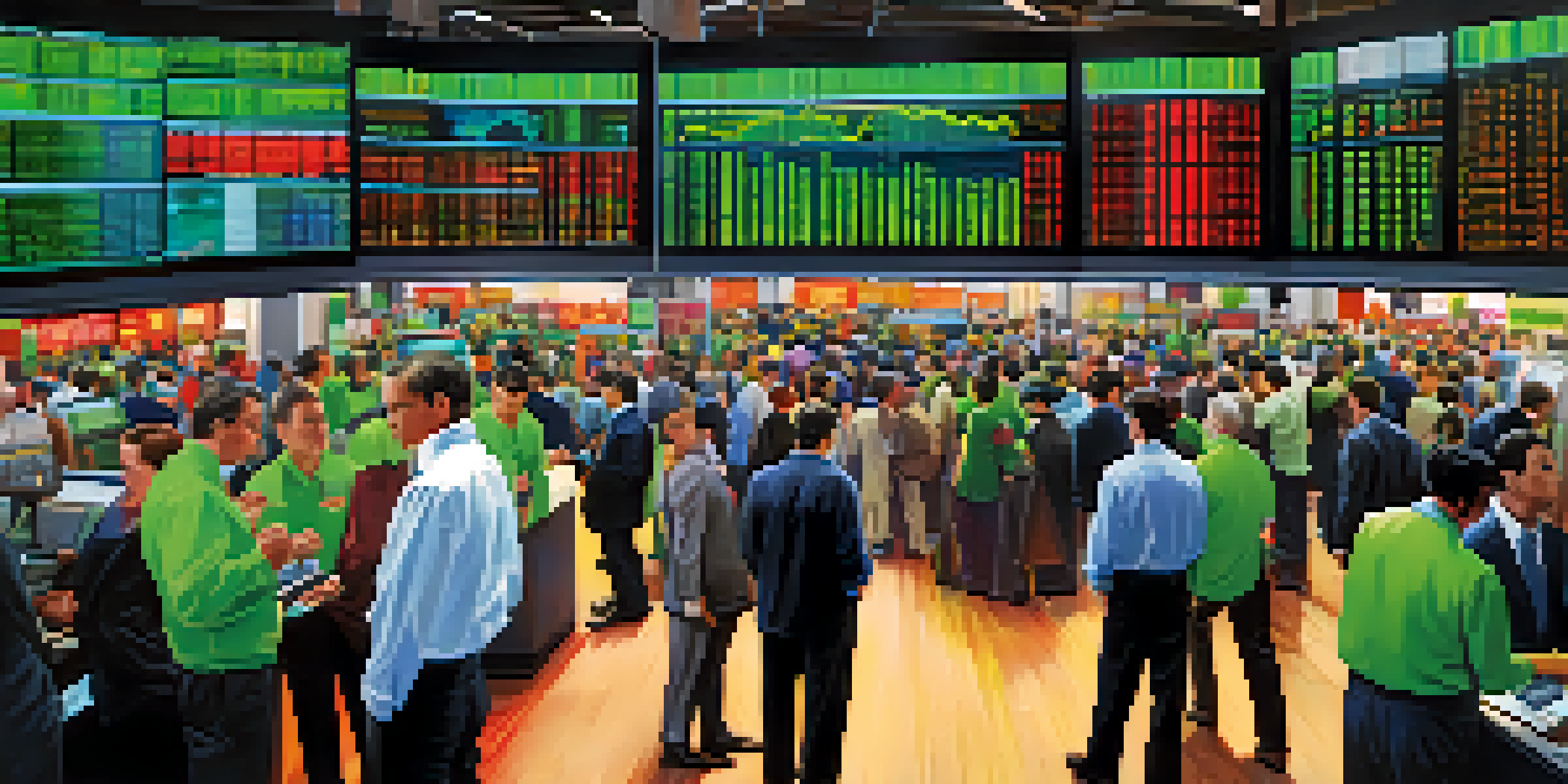How Economic Indicators Affect Margin Trading

What Are Economic Indicators and Why They Matter?
Economic indicators are statistical data that reflect the overall health of an economy. They serve as critical tools for traders, providing insights into market trends and potential price movements. For margin traders, understanding these indicators is essential to make informed decisions and manage risks effectively.
In investing, what is comfortable is rarely profitable.
Common indicators include GDP growth rates, unemployment figures, inflation rates, and consumer confidence indices. Each of these can signal shifts in market dynamics, impacting everything from stock prices to currency values. When traders are aware of these indicators, they can better anticipate market reactions and adjust their margin strategies accordingly.
For instance, a sudden rise in unemployment might lead traders to anticipate a downturn in the market, prompting them to reconsider their leveraged positions. On the flip side, positive economic growth can encourage traders to increase their margin for greater potential profits. Thus, staying informed about economic indicators is vital for successful margin trading.
How Inflation Affects Margin Trading Decisions
Inflation, the rate at which the general level of prices for goods and services rises, plays a significant role in margin trading. When inflation is high, it can erode purchasing power and lead to increased volatility in the markets. This volatility can create both challenges and opportunities for margin traders, who must navigate these changes carefully.

For example, if inflation rates exceed expectations, central banks may respond by raising interest rates. Higher interest rates can lead to a stronger currency and reduced borrowing costs, impacting asset prices. Margin traders need to be vigilant, as they may need to adjust their positions quickly to mitigate potential losses.
Economic Indicators Guide Trading
Understanding economic indicators like GDP, inflation, and consumer confidence is essential for margin traders to make informed decisions and manage risks.
Moreover, inflation can also affect the profitability of companies, which in turn influences stock prices. If traders anticipate that inflation will negatively impact a company's earnings, they may choose to reduce their margin or even close positions. Therefore, understanding inflation's impact is crucial for making strategic margin trading decisions.
The Role of Interest Rates in Margin Trading
Interest rates represent the cost of borrowing money, and they can significantly impact margin trading. When interest rates are low, borrowing becomes cheaper, encouraging traders to leverage their investments. This can lead to increased trading volume and potentially higher profits if the market moves in their favor.
Risk management is about managing the risk of loss, but it is also about managing the risk of missed opportunity.
Conversely, when interest rates rise, the cost of borrowing increases, which can deter traders from using margin. This often results in reduced market activity and can lead to price corrections. Margin traders must keep a close eye on interest rate trends to adapt their strategies accordingly, as these fluctuations can directly affect their leveraging capabilities.
For instance, if a trader anticipates an interest rate hike, they might choose to close out margin positions to avoid higher costs. Understanding the relationship between interest rates and margin trading is essential for maximizing gains while minimizing risks.
GDP Growth and Its Impact on Margin Trading Strategies
Gross Domestic Product (GDP) is a key indicator of economic health, measuring the total value of goods and services produced in a country. A growing GDP generally signals a robust economy, which can boost investor confidence and lead to increased market activity. For margin traders, positive GDP growth can present profitable trading opportunities.
When GDP growth exceeds expectations, it often leads to higher stock prices, prompting traders to take on more margin to capitalize on upward trends. Conversely, weak GDP growth or a contraction can lead to bearish market sentiment, causing margin traders to reassess their positions and potentially reduce their leverage.
Inflation Impacts Trading Strategies
High inflation can lead to increased market volatility, compelling margin traders to adjust their positions to mitigate potential losses.
For example, if a trader sees a report indicating stronger-than-expected GDP growth, they might increase their margin to leverage the anticipated rise in stock prices. Understanding how GDP growth affects market sentiment is vital for margin traders looking to optimize their strategies.
Consumer Confidence: A Key Indicator for Margin Traders
Consumer confidence measures how optimistic consumers feel about the economy's performance. High consumer confidence typically leads to increased spending, which can drive economic growth and positively affect asset prices. Margin traders closely monitor consumer confidence levels as they can indicate potential market movements.
If consumer confidence is high, traders may feel more secure in taking on additional margin, expecting that increased spending will lead to higher stock prices. On the other hand, declining consumer confidence can signal economic troubles ahead, prompting traders to be cautious and reduce their leverage.
For instance, a sudden drop in consumer confidence might lead a trader to exit leveraged positions to avoid potential losses. Thus, understanding consumer sentiment helps margin traders make more informed decisions and navigate market fluctuations effectively.
Geopolitical Events and Their Influence on Margin Trading
Geopolitical events, such as elections, trade agreements, or conflicts, can significantly impact economic indicators and, consequently, margin trading. These events can create uncertainty in the markets, leading to heightened volatility that margin traders must navigate. Being aware of geopolitical developments is crucial for managing risk in margin trading.
For example, a sudden political upheaval can lead to market panic, causing asset prices to drop sharply. Margin traders must be prepared to react quickly, possibly closing positions or reducing leverage to mitigate losses. Conversely, positive geopolitical developments can lead to market rallies, prompting traders to increase their margin.
Risk Management is Essential
Implementing strong risk management strategies, such as setting stop-loss orders and diversifying portfolios, is crucial for success in margin trading.
Thus, understanding the potential impact of geopolitical events on economic indicators allows margin traders to adjust their strategies proactively. Staying informed about global events can provide traders with a competitive edge in the fast-paced world of margin trading.
The Importance of Risk Management in Margin Trading
Risk management is crucial in margin trading, as the use of leverage can amplify both gains and losses. When economic indicators signal potential market changes, traders must have a solid risk management strategy in place. This includes setting stop-loss orders, diversifying portfolios, and continuously monitoring market trends.
For example, if a trader is using margin and notices signs of economic instability, they might set tighter stop-loss orders to protect their capital. This helps to limit losses if the market moves against them. Additionally, diversifying investments can help spread risk, reducing the impact of negative economic news on their overall portfolio.

Ultimately, effective risk management allows traders to navigate the complexities of margin trading while responding to economic indicators. By being proactive and prepared, margin traders can better position themselves for success in fluctuating markets.